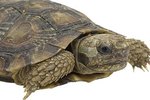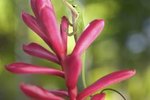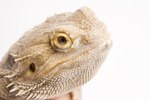
Chameleons are insectivores so their primary diet consists of insects. In fact, most chameleons in captivity will be content with a mixture of insects allowed to run free in their enclosure so they can have a snack whenever they want. Even though chameleons may not eat fruit themselves, feeding fruit to their prey can be helpful in preventing captive chameleons from developing a vitamin A deficiency.
Normal Diet for Chameleons
The bulk of a captive chameleon’s diet will be crickets and mealworms because they are the easiest to obtain from pet food stores. However, chameleons get bored eating the same meals daily, so adding some variety keeps them interested in eating. That variety can include live flies, roaches, grasshoppers and spiders. Depending on the chameleon species, the diet can also be spiced up with snails or slugs or even baby mice.
The Role of Fruit for Chameleons
In the wild, chameleons do not suffer from vitamin A deficiency because their prey is full of this important nutrient. Crickets and other feeder insects purchased from commercial providers may not be rich in vitamin A because their own diets have been lackluster. To correct the problem, chameleon owners can feed the insects foods rich in vitamins before feeding them to the chameleon. Fruits such as apples and oranges are good choices, but the insects can also eat broccoli, carrots, collard greens, spinach and sweet potatoes. The more nutrient rich the insects' diet, the healthier they make the chameleon that eats them.
References
Photo Credits
-
Tom Brakefield/Stockbyte/Getty Images
Writer Bio
Amy Jorgensen has ghostwritten more than 100 articles and books on raising and training animals. She is also an amateur dog trainer. She has also written more than 200 blog posts, articles, and ebooks on wedding and party planning on behalf of professionals in the field.




